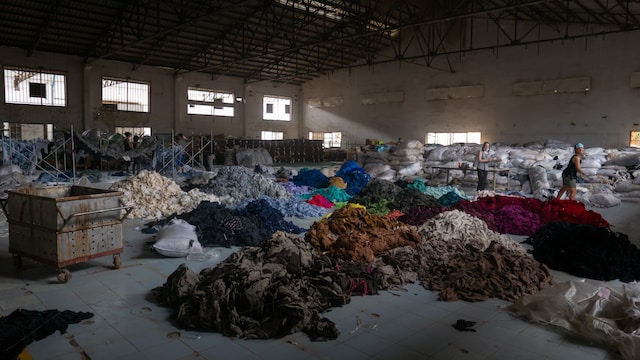Fashion is an ever-evolving industry, and one term that has gained significant attention in recent years is “fast fashion.” Fast fashion refers to the quick production and rapid turnover of inexpensive clothing items that are inspired by the latest fashion trends. In this comprehensive guide, we will delve into the world of fast fashion, exploring its impact on the environment, society, and economy. So, what exactly is fast fashion, and why has it become so prevalent in today’s society?
What is Fast Fashion?
Fast fashion is a business model characterized by the speedy production and distribution of trendy garments at affordable prices. It is an approach that allows clothing retailers to quickly respond to the latest fashion trends and offer them to consumers at low prices. This strategy encourages consumers to buy more clothes more frequently, as they can easily afford to update their wardrobes with the latest styles.
Fast fashion brands take inspiration from high-end fashion designers, runway shows, and celebrity styles. They quickly replicate these designs and produce them on a large scale, often outsourcing manufacturing to countries with low labor costs. By streamlining production processes and minimizing costs, fast fashion brands can offer a wide range of affordable clothing options to consumers.
When did Fast Fashion Start?
Fast fashion gained momentum in the early 2000s and has since become a dominant force in the fashion industry. Several factors contributed to its rise:
- Consumer Demand: In an era of social media and instant gratification, consumers increasingly seek the latest trends at affordable prices. Fast fashion caters to this demand by swiftly bringing runway-inspired styles to the masses.
- Globalization: The advent of globalization facilitated the outsourcing of manufacturing to countries with lower production costs. This enabled fast fashion brands to produce garments at a fraction of the cost compared to traditional fashion retailers.
- Technological Advancements: Technological advancements in textile production and logistics have accelerated the speed at which fast fashion brands can bring new designs to market. Advanced supply chain management systems allow for efficient distribution and quick replenishment of stock.
Why is Fast Fashion Bad?
Fast fashion is harmful due to its negative environmental impact, exploitative labor practices, low-quality garments that contribute to waste, lack of transparency, and cultural appropriation.
Environmental Impact of Fast Fashion
While fast fashion offers affordability and variety, it has a significant environmental impact. Here are some key concerns:
- Waste Generation: Fast fashion’s rapid trend cycle leads to increased clothing waste. Many consumers dispose of garments after only a few wears, contributing to the growing textile waste problem.
- Resource Consumption: Fast fashion heavily relies on non-renewable resources, such as water, energy, and raw materials. The production processes involved in making clothing items consume vast amounts of water and energy, contributing to environmental degradation.
- Pollution: The textile industry is one of the largest contributors to water pollution due to the release of harmful chemicals during manufacturing processes. Additionally, synthetic fabrics commonly used in fast fashion, such as polyester, release microplastics into the environment when washed.

Social Implications of Fast Fashion
Fast fashion’s impact extends beyond the environment and affects society in various ways:
- Exploitation of Workers: The fast fashion industry often outsources production to countries with lax labor regulations. This practice can lead to unsafe working conditions, unfair wages, and exploitation of workers, particularly in developing countries.
- Ethical Concerns: Fast fashion’s emphasis on low prices can lead to unethical practices, such as the use of sweatshops and child labor. These practices raise concerns about workers’ rights and the overall ethics of the industry.
- Unsustainable Consumption: Fast fashion’s emphasis on disposable clothing encourages a culture of excessive and impulsive buying. This consumer behavior perpetuates the idea that clothing is disposable, contributing to a throwaway culture that undermines sustainability.
The Economic Impact of Fast Fashion
Fast fashion has reshaped the fashion industry’s economic landscape in several ways:
- Job Creation: The fast fashion industry has created job opportunities in countries where manufacturing is outsourced. While these jobs provide income for many individuals, the working conditions and wages are often substandard.
- Market Competition: Fast fashion brands have disrupted the traditional fashion market by offering affordable alternatives to high-end designer brands. This has increased competition and forced traditional retailers to adapt their strategies.
- Supply Chain Dominance: Fast fashion brands have developed efficient supply chains that enable them to quickly deliver products to market. This supply chain dominance allows them to respond rapidly to consumer demands and stay ahead of competitors.
How to Stop Fast Fashion?
Here are some short points on how to stop fast fashion:
- Buy Less, Choose Quality: Opt for timeless, durable, and high-quality clothing items instead of constantly buying cheap, trendy pieces.
- Secondhand Shopping: Explore thrift stores, consignment shops, and online platforms for pre-owned clothing. It reduces demand for new fast fashion products.
- Support Sustainable Brands: Look for fashion brands that prioritize ethical and sustainable practices, such as using eco-friendly materials, fair trade, and transparent supply chains.
- Repair and Upcycle: Extend the lifespan of your clothing by repairing them when needed or transforming them into new styles.
- Educate Yourself: Learn about the negative impacts of fast fashion and share this knowledge with others to raise awareness.
- Minimalism: Embrace a minimalist lifestyle by focusing on quality over quantity and reducing your overall consumption of fashion items.
- Rent or Borrow: Instead of buying clothes for special occasions or one-time use, consider renting or borrowing from friends or specialized rental services.
- Support Local and Independent Designers: Seek out local designers or independent brands that prioritize sustainable and ethical practices.
- Demand Transparency: Encourage brands to be transparent about their supply chains, labor practices, and environmental impact. Support initiatives that promote transparency in the fashion industry.
- Advocate for Change: Support organizations and campaigns working to improve labor conditions and sustainability in the fashion industry. Use your voice to urge governments and companies to take action against fast fashion.
Frequently Asked Questions
1. What are the most well-known fast fashion brands?
Some of the most well-known fast fashion brands include Zara, H&M, Forever 21, Primark, and Uniqlo.
2. How can consumers make more sustainable fashion choices?
Consumers can make more sustainable fashion choices by opting for quality over quantity, buying from ethical and sustainable brands, embracing secondhand shopping, and taking good care of their clothing to extend its lifespan.
3. Are there any alternatives to fast fashion?
Yes, several sustainable fashion alternatives exist, such as slow fashion, ethical fashion, and sustainable fashion brands that prioritize fair labor practices, use eco-friendly materials, and promote conscious consumption.
4. Does fast fashion only apply to clothing?
While fast fashion is primarily associated with clothing, the concept can extend to other industries, such as accessories and home textiles.
5. What is the role of social media in promoting fast fashion?
Social media plays a significant role in promoting fast fashion by showcasing the latest trends, influencing consumer purchasing decisions, and creating a sense of urgency to stay up-to-date with fashion.
6. How can the fashion industry address the negative impacts of fast fashion?
The fashion industry can address the negative impacts of fast fashion by embracing sustainable practices, promoting transparency and accountability throughout the supply chain, and educating consumers about the importance of conscious consumption.
Conclusion
Fast fashion has revolutionized the fashion industry, offering consumers access to trendy clothing at affordable prices. However, its rapid trend cycle, environmental impact, and social implications raise important questions about sustainability and ethics. As consumers become more conscious of their purchasing decisions, the fashion industry must adapt and prioritize sustainable practices to ensure a more sustainable and responsible future.





